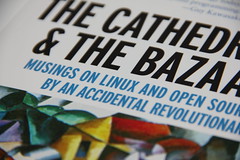
It’s the breaking point: the moment when someone has pushed you too far and you know that the rest of your time with that person will be spent managing as you find a way to make your exit.
The moment you realize you’ve had enough is so awkward because, usually, in addition to feeling angry and possibly embarrassed or ashamed, you are asking yourself “how the FUCK will I get out of this.” (If this is happening in your head, how censored are you really going to be?)
So then you start assessing how this is going to go down, how you’re going to make your escape and possibly let the other person know that you are D.O.N.E. This is when ideas of revenge start flooding through your head and you make a list.
Contemplating the list gives your rational brain a split second in which to punch through the other side and keep your anger from boiling over.
It’s a split second that can determine how much longer you will live with someone, how much longer you will continue in your present job or how much longer you will sit in a chair at a conference.
These situations usually involve a compromise in dignity. Professional life seems especially rife with personal indignity because the stakes are high. If you have a mortgage or aren’t sure how you would otherwise make money…yeah. Work or even peer situations in our industry can require checking your dignity at the door and putting up with some awful shit. Maybe you hate yourself for it and maybe there really isn’t a good way out even after you assess all of your options.
And then you get to that moment with a boss who keeps pointing out what they feel are your numerous personal failures while you’re sitting in the middle of a crowded open office with people swirling all around you in oblivion as the insults fly or you’re stuck listening to someone at a conference on or off of a stage who is saying things that offend you so deeply you just want to jump up and scream, ENOUGH!!!
What happens next?
Here is what I did:
I had just moved to the Bay Area and was attending my first tech Meetup in San Francisco. It was exciting to finally talk to some people and to participate in the San Francisco “tech scene.” I noticed that there were even a few women in the audience which made me happy. There were 2 speakers on the schedule and the second speaker was in the middle of his talk when he cut to a slide of naked male parts. You know what he said?
“This is San Francisco, I’m sure we’re all ok with this.”
I was not ok.
I was disgusted and embarrassed. I looked around at everyone else looking around. My internal conversation went something like this:
Angry Marlena: I’m gonna stand up and scream at that motherfucker that IT IS NOT OK!!!!!!!!
Friendly Marlena: Shut up! You came here to make friends! Who will want to be friends with you if you shout down a speaker at this tech talk where you don’t know a soul?
Angry Marlena: (Heavy sigh) Fine! But I’m gonna stand up anyway and just STARE HIM DOWN!
Friendly Marlena: Would you shut up! That’ll just make you look crazy.
Angry Marlena: $%^^%$$%^&(&%$%^&*(*^%$#$^&**&
Friendly Marlena: %#$%^&J#$@#$#&^((^$#&*^%$#%@#%^%^&*&$
After another 2 minutes of mortification, I noticed that the bus I needed to catch would be arriving directly across the street in 15 minutes, so I got up and quietly exited. It was a while before I came back to San Francisco for a Meetup.
But that’s not my only example.
A few months later, I was at an internal corporate conference (for someone other than my current employer), sitting in one of those “seating areas” with some co-workers. The conference had just wrapped up and we were all sitting around being pretty quiet as our energy was at a low ebb. Through the thin veil of fake-conference-plants behind me, I overhead a conversation.
“But how do you get the motion of them so that they’re nice and bouncy? Like you just want to grab ’em?”
“Oh, there’s a library for that. I love using it for 3-D tits.”
People who know me will know exactly the look that was on my face.
The conversation continued and I kept doing my best to let it go. I was not in the best place with my job at the time, and it would have been horrific timing for me to rock any kind of boat. This made it hard to have a realistic perspective in the moment.
Also, as an aside, I’d just like to say that I LOVE California for making people at larger companies take an online workplace harassment course created by the state. With the B-movie actors and the hysterically cheesy script, I laughed my way through when I took it, but there have been so many times when I’ve been glad that I took it and glad that my co-workers have also taken it. It set the right baseline.
Back to the conversation about how to create the best virtual female parts.
I tried to be quiet. I did. But I wasn’t. I jumped up, turned around and screamed, “WOULD YOU STOP TALKING ABOUT ME???!!!!!!!”
The guy turned around with the most freaked out look on his face and he screamed back, “NO, NO, I’M NOT TALKING ABOUT YOU!!!!”
That was the end of it. Was there a better way to handle this? Of course there was! But, the split-second opportunity for my rational brain to make a better assessment was not long enough. I guess this was me finding my voice, and even though I’m not 100% proud of what I did, I’m glad that I did something because if I hadn’t said something, I would have been bottling my rage at this incident for the next unfortunate person who told an inappropriate joke in a professional situation.
And that’s the double-edged sword that gets plunged through your heart when you’ve been pushed too far:
- If you don’t do anything and stay quiet, you bottle your emotions up for later which means you’ll be even more rage-tastic the next time something similar happens even if the offhand comment isn’t as cut-and-dried or your boss is making the only fair point he’s ever gonna make.
- On the other hand, if you do say something, plenty of people will say you’re a crazy paranoid freak on a rant and you just might get fired (in Joan’s case, burned at the stake).
At this point, I’ve been through enough to know that no matter how bad things get immediately after you say what you need to say, even if you lose your job or popular opinion is not on your side, at least you’ve said your peace and let it go.
My thoughts are with Adria Richards.



















